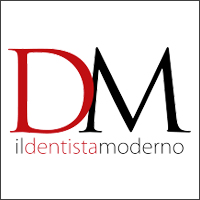Aspects of oral morphology as decision factors in mini-implant supported overdenture – Romanian Journal of Morphology and Embryology • 2010, 51(2):309–314
Romanian Journal of Morphology and Embryology • 2010, 51(2):309–314
Aspects of oral morphology as decision factors in mini-implant supported overdenture
Elena Preoteasa, Marina MeleŞcanu-imre, Cristina Teodora Preoteasa Department of Oral Diagnosis and Ergonomics “Carol Davila” University of Medicine and Pharmacy of Bucharest, Romania, Mihaela Marin Department of Prosthodontics, Henriette Lerner Private practice, Baden Baden, Germany
Abstract
Evaluation of some morphological oral aspects perceived as decision factors in complete edentulism treatment by mini-implants overdenture. Patients, Material and Methods: An observational study was conducted on a sample of 24 patients (average age of 61 years), through clinical and imagistic methods. The variables taken into consideration were: age, gender, alveolar mucosa status, bone offer, miniimplants characteristics, insertion torque and loading type. Results: 117 mini-implants were applied. Conclusions: Mini-implant supported overdenture can be an alternative to conventional denture and conventional implant overdenture. Its advantages derives from implants’ characteristics (smaller diameter, variable length, O-ring retention system), which adapts better to the particular edentulous conditions. Insertion technique implies less surgical trauma. Choosing implants’ size, number, topography, and the loading method have a great variety, depending on anatomical feature (bone offer, mucosa and relationship with the nearby anatomical structures), functional features and patients’ wishes.
Conclusions
Mini-dental implant supported overdenture can be in complete edentulous patients a treatment alternative to both conventional dentures and conventional implant retained overdenture.
The advantages of this type of treatment derives from the characteristics of this type of implant (small diameter, variable length, O-ring retention system), which adapts better to the particular morphological conditions present in full edentulous patients. Also, the implants insertion requires less surgical trauma, this being a beneficial aspect in the context of usually poor general status.
Proceeding and achieving the treatment requires needs careful evaluation through clinical, imagistic and laboratory methods. Frequently there are identified some unfavorable conditions for implant insertion and a high degree of treatment difficulty. These issues (morphological and functional features, related to general health status, age, gender, etc.) must be linked to implants characteristics, in order to decide the particular treatment features, from surgical and prosthetic point of view. The length, diameter, number, topography, loading method of implants can present a large variety, depending on quantitative bone offer (ridge width and bone height), quality (bone density), functional features and patient’s wishes.
This type of treatment has a lower cost compared to conventional implant supported overdenture, by the lower cost of mini-implants, and also due to the use, in general, just of the panoramic radiography as imagistic method (computed tomography is an adjuvant method, but not essential in most cases). Also by eliminating some surgical intervention, we eliminate also their costs. On the other hand, the benefits related to an improved stability, better functionality and adaptation are quickly noticed by the patient and increases their level of satisfaction.
Due to the relatively simple technique, less traumatic, but with benefits that are quickly perceived, the mini-implant supported overdenture may be the elective treatment alternative for complete edentulous patients.
References
[3] MELESCANU M, PREOTEASA E, Mandibular panoramic indexes predictors of skeletal osteoporosis for implant therapy, Curr Health Sci J, 2009, 35(4):291–296.
[7] ***, IMTEC Corporation official website, retrieved December 13, 2009, http://www.imtec.com/europe/.
[13] ORDOÑEZ A, EASTMOND V, Mini-dental implants – they’re here to stay, Postgraduate Dentist Caribbean, 3(1):7–12.





